A printable version of this report ![]() is also available.
is also available.
Welcome
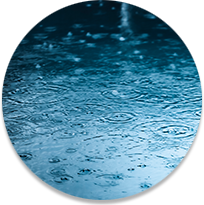 At Hawaii Water, our goal is to deliver safe, high-quality drinking water, 24 hours per day, seven days per week, 365 days per year. As part of that effort, we produce this annual water quality report, which includes information about where your water comes from, what it contains, and how it compares to state and federal standards. Most importantly, it confirms that in 2022, our water met or surpassed all standards set by the Hawaii Department of Health and U.S. Environmental Protection Agency (EPA) to protect public health.
At Hawaii Water, our goal is to deliver safe, high-quality drinking water, 24 hours per day, seven days per week, 365 days per year. As part of that effort, we produce this annual water quality report, which includes information about where your water comes from, what it contains, and how it compares to state and federal standards. Most importantly, it confirms that in 2022, our water met or surpassed all standards set by the Hawaii Department of Health and U.S. Environmental Protection Agency (EPA) to protect public health.
If you have any questions or concerns, please contact our Customer Center at 808 883-2046 or toll-free at 877 886-7784, or contact us.
Your Water System
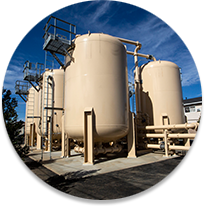 Kalaeloa Barbers Point Water is monitored and tested by an independent, certified laboratory and the Hawaii Department of Health for all contaminants established by the Safe Drinking Water Act.
Kalaeloa Barbers Point Water is monitored and tested by an independent, certified laboratory and the Hawaii Department of Health for all contaminants established by the Safe Drinking Water Act.
Kalaeloa Barbers Point's source water is supplied by the Ewa-Kunia aquifer and is withdrawn by the Barbers Point Shaft to provide drinking water to approximately 5,250 customers in the Kalaeloa area. The water is disinfected with chlorine to ensure it meets the Safe Drinking Water Regulations of the EPA and the State of Hawaii Department of Health.
In an effort to protect the health of our customers in the aftermath of the Red Hill fuel spill events impacting the Waimalu and Moanalua aquifers, Hawaii Water monitored Kalaeloa Barbers Point water for volatile and semi-volatile organic compounds (VOCs and SVOCs) throughout 2022 and ongoing in 2023. All samples have returned non-detect, indicating fuel has not contaminated the Barbers Point Shaft well, which is physically separated from the affected aquifer.
The Hawaii Department of Health's Safe Drinking Water Branch completed the preliminary draft of Kalaeloa Barbers Point source water assessment and protection program in March 2004.
For additional drinking water quality information, contact:
- EPA Safe Drinking Water Hotline: (800) 426-4791
water.epa.gov/drink - State of Hawaii Safe Drinking Water Branch
Department of Health: (808) 586-4258
health.hawaii.gov/sdwb - Hawaii's Source Water Assessment and Protection Program:
health.hawaii.gov/sdwb/swap
www.fsa.usda.gov/Internet/FSA_File/hicreppeafinal.pdf
Possible Contaminants
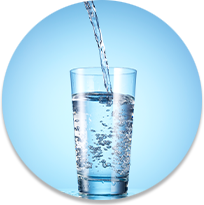 Drinking water, including bottled water, may be reasonably expected to contain at least small amounts of some substances. The presence of substances does not necessarily indicate that the water poses a health risk. More information about substances and potential health effects can be obtained by calling the EPA's Safe Drinking Water Hotline at(800) 426-4791.
Drinking water, including bottled water, may be reasonably expected to contain at least small amounts of some substances. The presence of substances does not necessarily indicate that the water poses a health risk. More information about substances and potential health effects can be obtained by calling the EPA's Safe Drinking Water Hotline at(800) 426-4791.
Protecting Your Water
The sources of drinking water (both tap and bottled) include rivers, lake, streams, ponds, reservoirs, springs, and wells. As water travels over the surface of the land or through the ground, it dissolves naturally occurring minerals—and in some cases radioactive material—and can pick up substances resulting from the presence of animals or human activities. Prior to entering the distribution system, source water with constituents over maximum contaminant levels is treated to reduce levels to meet standards set by public health experts. Contaminants that may be in untreated water include:
- Microbial contaminants, such as viruses and bacteria, which may come from sewage treatment plants, septic systems, agricultural livestock operations, and wildlife.
- Inorganic contaminants, such as salts and metals, which can be naturally occurring or result from urban stormwater runoff, industrial or domestic wastewater discharges, oil and gas production, mining, or farming. Pesticides and herbicides, which may come from a variety of sources such as agriculture, urban stormwater runoff, and residential uses.
- Organic chemical contaminants, including synthetic and volatile organic compounds, which are byproducts of industrial processes and petroleum production, and can also come from gas stations, urban stormwater runoff, and septic systems.
- Radioactive contaminants, which can be naturally occurring or be the result of oil and gas production and mining activities.
To ensure that tap water is safe to drink, the EPA prescribes regulations that limit the amount of certain contaminants in water provided by public water systems. The Food and Drug Administration regulates contaminants in bottled water to protect public health.
Individuals with Special Health Concerns
Some people may be more vulnerable to substances in drinking water than the general population. Immunocompromised people, such as those with cancer undergoing chemotherapy, those who have undergone organ transplants, or people with HIV/AIDS or other immune system disorders; some elderly people; and infants can be particularly at risk from infections. These people should seek advice about drinking water from their health care providers. The EPA/Centers for Disease Control and Prevention (CDC) guidelines on appropriate means to lessen the risk of infection by Cryptosporidium and other microbiological substances are available from the Safe Drinking Water Hotline at (800) 426-4791.
Cross-Connection Control
To ensure that the high-quality water we deliver is not compromised in the distribution system, Hawaii Water has a robust cross-connection control program in place. Cross-connection control is critical to ensuring that activities on customers' properties do not affect the public water supply. Our cross-connection control specialists ensure that all of the existing backflow prevention assemblies are tested annually, assess all connections, and enforce and manage the installation of new commercial and residential assemblies.
Backflow can occur when certain pressure conditions exist either in our distribution system or within the customer's plumbing, so our customers are our first line of defense. A minor home improvement project—without the proper protections—can create a potentially hazardous situation, so careful adherence to plumbing codes and standards will ensure the community's water supply remains safe. Please be sure to utilize the advice or services of a qualified plumbing professional.
Many water-use activities involve substances that, if allowed to enter the distribution system, would be aesthetically displeasing or could even present health concerns. Some common cross-connections are:
- Garden hoses connected to a hose bib without a simple hose-type vacuum breaker (available at a home improvement store)
- Improperly installed toilet tank fill valves that do not have the required air gap between the valve or refill tube
- Landscape irrigation systems that do not have the proper backflow prevention assembly installed on the supply line
Customers must ensure that all plumbing is in conformance with local plumbing codes. Additionally, state law requires certain types of facilities to install and maintain backflow prevention assemblies at the water meter. Hawaii Water's cross-connection control staff will determine whether you need to install a backflow prevention assembly based on water uses at your location.
About Lead
 In your system, results from our lead monitoring program, conducted in accordance with the Lead and Copper Rule, were non-detectable for the presence of lead.
In your system, results from our lead monitoring program, conducted in accordance with the Lead and Copper Rule, were non-detectable for the presence of lead.
As the issue of lead in water continues to be top of mind for many Americans, Hawaii Water wants to assure you about the quality of your water.
None of these conditions exist at Hawaii Water. We have worked proactively to eliminate lead-bearing materials from our water systems, and we are compliant with health and safety codes mandating the installation of lead-free materials in public water systems. We test our water sources to ensure that the water we deliver to customers' meters meets water quality standards and is not corrosive toward plumbing materials.
The water we deliver may meet lead standards, but what about your home plumbing? Because lead in drinking water comes primarily from materials and components associated with service lines and home plumbing, the Lead and Copper Rule is a critical part of our water quality monitoring program.
The Lead and Copper Rule requires us to test water inside a representative number of homes that have plumbing most likely to contain lead and/or lead solder. This test, with other water quality testing, tells us if the water is corrosive enough to cause lead from home plumbing to leach into the water. If the "Action Level" for lead is exceeded, we work with our customers to investigate the issue and, if necessary, implement corrosion control before the lead levels create a health issue.
Elevated levels of lead, if present, can cause serious health problems, especially for pregnant women and young children. Lead in drinking water is primarily from materials and components associated with service lines and home plumbing. Hawaii Water is responsible for providing high-quality drinking water, but cannot control the variety of materials used in plumbing components.
When your water has been sitting for several hours, you can minimize the potential for lead exposure by flushing your tap for 30 seconds to two minutes before using water for drinking or cooking. If you are concerned about lead in your water, you may wish to have your water tested by a certified lab. Information on lead in drinking water, testing methods, and steps you can take to minimize exposure is available from the Safe Drinking Water Hotline or at www.epa.gov/safewater/lead.
PFAS
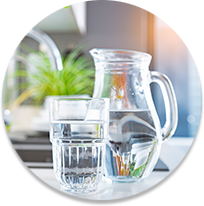 Per- and polyfluoroalkyl substances (PFAS) are manmade compounds that have been used to make carpets, clothing, fabrics for furniture, paper packaging for food, and other materials (e.g., cookware) that are resistant to water, grease, or stains. These compounds are also used for firefighting at airfields, which is one way they have found their way into groundwater in certain areas.
Per- and polyfluoroalkyl substances (PFAS) are manmade compounds that have been used to make carpets, clothing, fabrics for furniture, paper packaging for food, and other materials (e.g., cookware) that are resistant to water, grease, or stains. These compounds are also used for firefighting at airfields, which is one way they have found their way into groundwater in certain areas.
In March 2023, EPA issued a proposed national primary drinking water regulation for certain PFAS. The proposed regulation calls for a maximum containment level for PFOS and PFOA of 4 ppt each. Four additional PFAS—PFNA, PFHxS, PFBS, and GenX— would have a combined hazard index limit of 1.0; the hazard index calculation would determine if the levels of these PFAS as a mixture pose a potential risk.
We believe a comprehensive approach is needed to properly address the situation. We urged the EPA to establish a consistent, science-based standard as quickly as feasible, and strongly supported state legislation that will prohibit the sale and use of certain products that contain PFAS, require the certification of accurate testing methods for PFAS, and establish a publicly accessible database that houses the sources of PFAS entering water supplies. We are also pursuing grants where available to further offset customer cost impacts.
Studies indicate that long-term exposure to PFAS over certain levels could have adverse health effects, including developmental effects to fetuses during pregnancy or infants; cancer; or impacts on liver, immunity, thyroid, and other functions. Potential health effects related to PFAS are still being studied, and research is still evolving on this issue.
While we are doing our part to treat the water and meet the standards public health experts have set, it's important that our population as a whole focuses on being good stewards of the environment and takes steps to prevent impacting the water supply.
Table Introduction
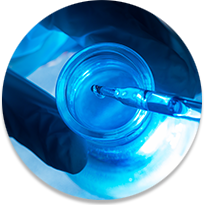 The 2022 Water Quality Table lists all of the contaminants that we detected in your drinking water in 2022 (except where noted).
The 2022 Water Quality Table lists all of the contaminants that we detected in your drinking water in 2022 (except where noted).
Although the EPA requires water systems to test for up to 125 substances, we list only those substances detected in your water. See the Potential Contaminants web page for a complete list of contaminants we test for.
The state allows us to monitor for some substances less than once per year because the concentrations of these substances do not change rapidly.
Important Definitions
Our testing equipment is so sensitive, it can detect constituents as small as 1 part per trillion. That is equivalent to 1 inch over 15 million miles
Table Key |
|
| n/a | Not applicable |
| MRDL | Maximum residual disinfectant level |
| MRDLG | Maximum residual disinfectant level goal |
| ND | Not detected |
| ppm | Parts per million, or milligrams per liter (mg/L) |
| ppb | Parts per billion, or micrograms per liter (µg/L) |
| pCi/L | Picocuries per liter (a measure of radioactivity) |
| SMCL | Secondary maximum contaminant level |
Water Quality Table
Primary Drinking Water Standards |
||||||||
| Inorganic Chemicals | Year Tested | Unit | MCL (SMCL) | MCLG | In Compliance | Result | Source of Substance | |
| Nitrate (as nitrogen) | 2022 | ppm | 10 | 10 | Yes | 3.6 | Runoff and leaching from fertilizer use; leaching from septic tanks and sewage; erosion of natural deposits | |
| Selenium | 2020 | ppb | 50 | — | Yes | 5.3 | Discharge from petroleum and metal refineries; Erosion of natural deposits; Discharge from mines | |
| Disinfection Byproducts | Year Tested | Unit | MCL (SMCL) | MCLG | In Compliance | Result | Source of Substance | |
| Total haloacetic acids | 2022 | ppb | 60 | n/a | Yes | 1.1 | Byproduct of drinking water chlorination | |
| Total trihalomethanes | 2022 | ppb | 80 | n/a | Yes | 8 | Byproduct of drinking water chlorination | |
| Synthetic Organic Chemicals | Year Tested | Unit | MCL (SMCL) | MCLG | In Compliance | Result | Source of Substance | |
| Atrazine | 2022 | ppb | 3 | — | Yes | 0.06 | Runoff and leaching from fertilizer use | |
| Disinfectant | Year Tested | Unit | MRDL | MRDLG | In Compliance | Range | Average | Source of Substance |
| Chlorine | 2022 | ppm | 4 | 4 | Yes | 0.06–0.83 | 0.4 | Drinking water disinfectant added for treatment |
Other Regulated Substances |
||||||||
| Metals | Year Tested | Unit | AL | MCLG | In Compliance | 90th Percentile | Samples > AL | Source of Substance |
| Copper | 2020 | ppm | 1.3 | 1.3 | Yes | 0.39 | 0 of 20 | Internal corrosion of household plumbing systems; erosion of natural deposits; leaching from wood preservatives |
| Lead | 2020 | ppb | 15 | 0 | Yes | ND | 0 of 20 | Internal corrosion of household plumbing systems; discharge from industrial manufacturers; erosion of natural deposits |
| Radionuclides | Year Tested | Unit | MCL (SMCL) | MCLG | In Compliance | Result | Source of Substance | |
| Beta particle | 2021 | pCi/L | 50* | 0 | Yes | 6.1 | Erosion of natural deposits | |
Secondary Drinking Water Standards and Unregulated Compounds |
||||||||
| Inorganic Chemicals | Year Tested | Unit | SMCL | MCLG | In Compliance | Result | Source of Substance | |
| Sodium | 2020 | ppm | n/a | n/a | Yes | 128 | Erosion of natural deposits; seawater influence | |
| Sulfate | 2022 | ppm | 500 | n/a | Yes | 34 | Runoff/leaching from natural deposits; industrial wastes | |
* The MCL for beta particles is 4 mrem/year. EPA considers 50 pCi/L to be the level of concern for beta particles.
Thank you.
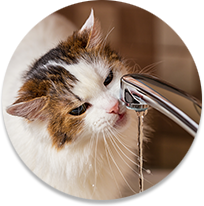 Thanks for taking the time to learn more about your water quality!
Thanks for taking the time to learn more about your water quality!
If you have questions, comments, or concerns regarding your drinking water, please contact Hawaii Water Service. We welcome your interest in Waikoloa's water system.
If you have any questions about your water quality table, please Contact Us.



